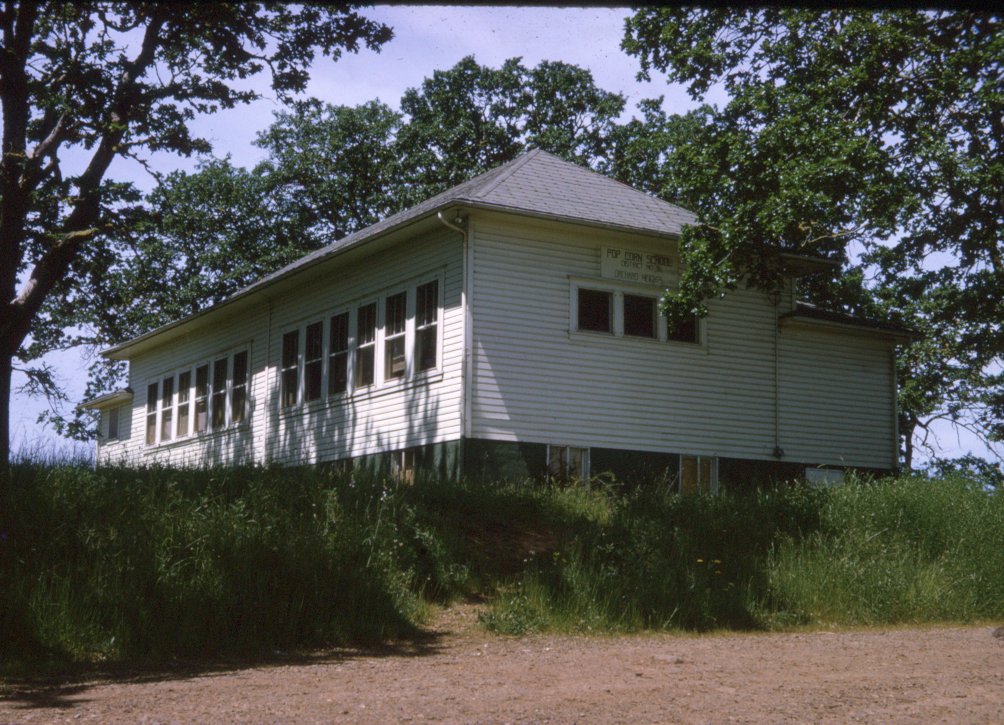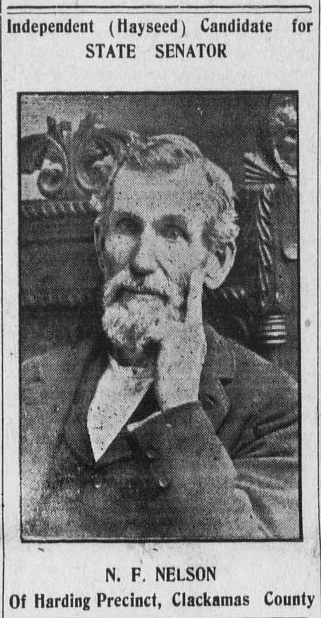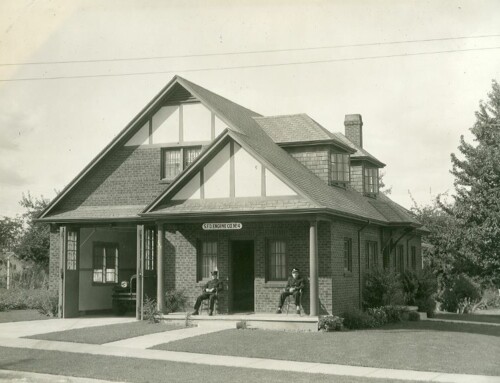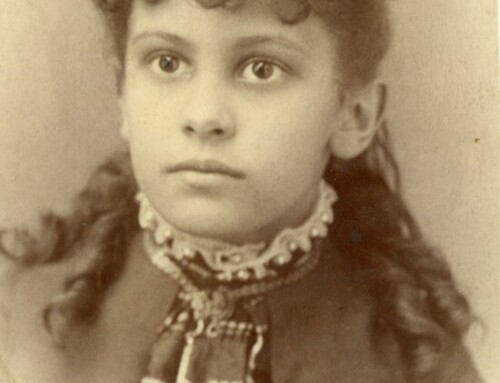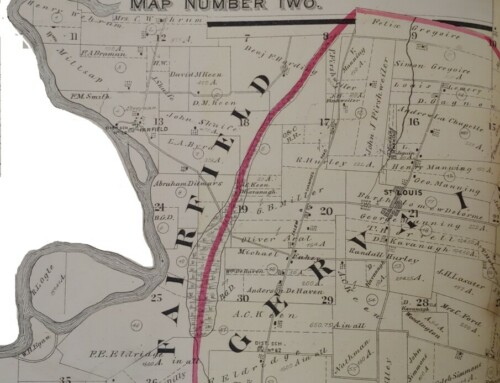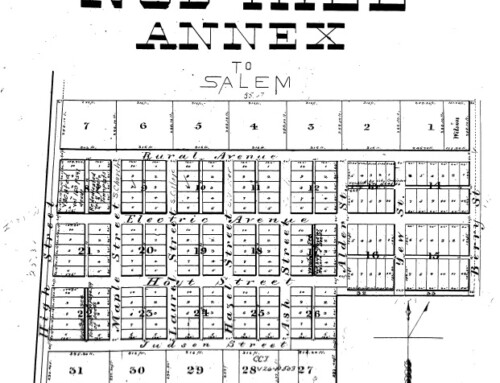“I looked out the window and what did I see? Popcorn popping on the apricot tree. Spring had brought me such a nice surprise,” as the familiar children’s song goes. It seems appropriate this time of year as the cherry trees that our fair city is known for are bursting into “bloom”, not necessarily “popcorn”, to tell the story of the Popcorn School and Napoleon.
Across the bridge to West Salem, up Orchard Heights Rd. in the foothills of the Eola Range, there once was a school named Popcorn. Organized as School District 36, the school was built on the James Best parcel of the original Hiram English donation land claim near present-day 4417 Orchard Heights Rd. in West Salem. Official county records state that the school was built in 1900, despite earlier accounts of nearby settlers shared in the paragraphs below. In 1898 there was a fire at the Polk County Courthouse in Dallas in which many of the old school records were destroyed. County property records however, had been stored in a vault in the clerk’s office in the northeast corner of the building. This part of the building did not catch fire as quickly, so many of those records were able to be saved. As a result, when documenting the official starting year for Polk County schools, the decision was made to use the date of the first recorded school property deed.
There are two accounts of how the school was named. The first was documented by Lewis A. McArthur, Oregon geographer and author of the book Oregon Geographic Names. According to McArthur the school received its name in early days when rebellious pupils locked their teacher in the schoolhouse. The teacher had both popcorn and plenty of time so he proceeded to pop it. The youngsters, hoping for a share of the popcorn treat, opened the door and let the teacher out. This story was also cited in Polk County Oregon Place Names published by the Polk County Historical Society.
A second account can be found in the Clara Pearce Smith memoir quoted in a 1953 Capitol Journal article written by Ben Maxwell. Mrs. Smith was one of eleven children in the Thomas Pearce family that arrived in the Eola area (now West Salem) in 1852. Her memoir states that Popcorn School District No. 36 was organized in 1867 and built with volunteer labor at that time. Mrs. Smith and James Best, the property owner, believe that an even earlier school may have stood on the site, based on relics of early pioneer construction found on the property. According to Mrs. Smith, the 1867 structure stood until another larger structure was built in 1912.
The first teacher at Popcorn School according to the Smith memoir was 17 year old Napoleon Franklin Nelson, known as “Polley.” He was a man of small stature in a rural school that contained many pupils larger, though not older than he. So the story goes, at the end of the first term the pupils demanded that Polley treat the school. When Polley refused, he was promptly seized by the insistent pupils who hustled him along to the nearby creek for a dunking. They dunked Polley and dunked him again until he promised a treat. On his return to the schoolhouse, Polley brought a flour sack filled with popcorn. Hence, the name, Popcorn School.
Hard to imagine a man named after Napoleon, infamous French dictator and general, submitting easily to a rambunctious bunch of students after a treat. But Napoleon Franklin Nelson or N. F. Nelson as he preferred in later years, was no ordinary man. In 1851 at the age of 12 he emigrated to Oregon and was apprenticed to Mr. Asahel Bush in the printing profession for three years. An interesting side job of his apprenticeship was to carry love letters between Mr. Bush and his future wife Eugenia Zieber. Then in his own words, “the day after I was 17 years old I commenced teaching school,” despite having only three years of formal education himself.
At age 21 he started for the gold mines of eastern Oregon taking up claims on Canyon Creek near the John Day River. While there, he entered a partnership with Tom Brents to start a Pony Express between Canyon City and The Dalles. Nelson made the first trip, arriving in The Dalles on the 4th of July 1862. The men sold out for $1000 a year later and Nelson went into the freight-hauling business, hiring two men to help him. On his second trip to Canyon City with freight, he lost his pack train and had one man wounded in trouble with Indians. Within five years of catching gold fever, he returned to the city of Eola in the Willamette Valley to care for his widowed mother.
Napoleon F. Nelson never married and spent the rest of his days running for political office. First as a candidate for state senator in 1906, governor in 1909, and finally at the age of 75 in 1917 declared himself a candidate for the Presidency of the United States, going so far as to write then Senator George E. Chamberlain for encouragement and backing. Senator Chamberlain responded with no encouragement because he expected the incumbent Woodrow Wilson to be re-elected.
Mr. Nelson ran each campaign with the same motto of “equal rights, equal laws and equal justice to every citizen.” His platform? In his own words, “I favor National Prohibition. National Woman’s Suffrage, a limited tariff and if there be anything more it is embraced in the words ‘Do unto others as you would have others do to you.'” Napoleon-esque? Far from it. Just an honest, hard-working Oregon pioneer battling for an opportunity to give back to the state and country he loved. An endorsement from the Capitol Journal September 20, 1909 during his gubernatorial campaign sums it up quite nicely, “he is a patriot to the core and would-be candidates for governor had better keep their eye on the man who walks with the red, white, and blue cane.”



